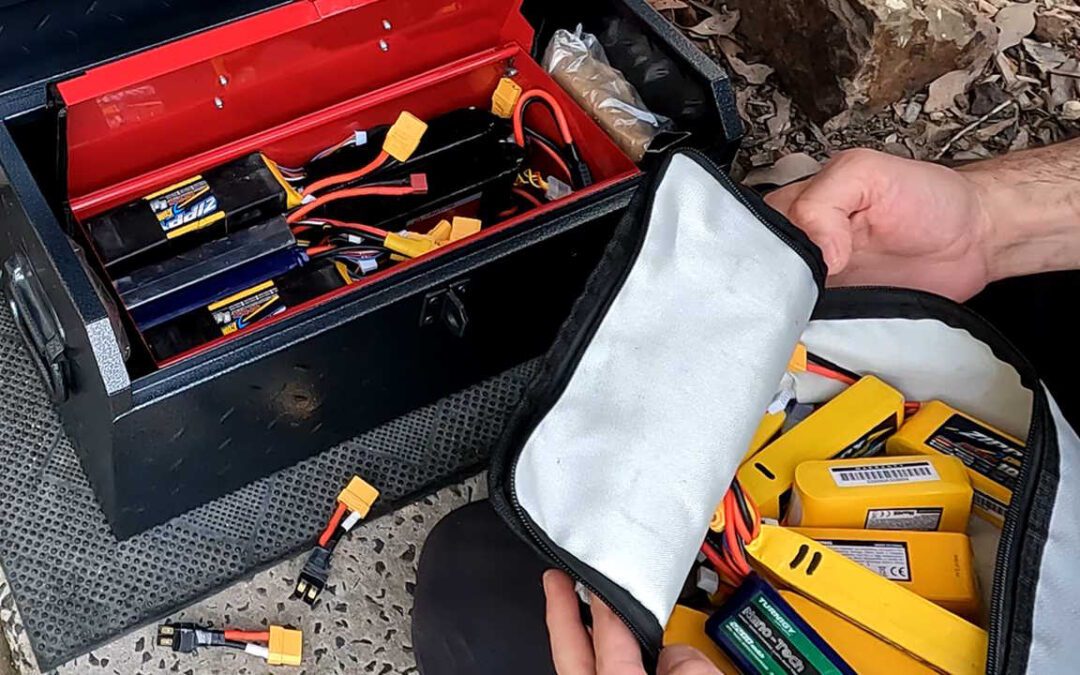What Are LiPo Batteries?
LiPo is short for Lithium Polymer. It’s a type of rechargeable battery that is commonly used in radio-controlled (RC) vehicles and other electronic devices, likely including the phone or laptop you may be using to read this article. LiPo batteries are popular due to this battery chemistry’s high energy density, which means they can store a large amount of energy in a small package. LiPo is basically lightweight, packs a punch and is cheap to produce.
There are some downsides to the battery type, which we’ll get to below. The short version is that LiPo is usually the best battery type to use for RC models.
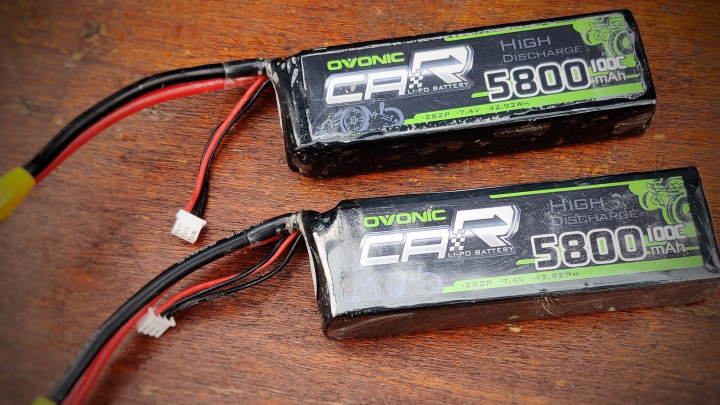
Why Are LiPo Batteries Good?
LiPo batteries have several advantages over other types of batteries that are commonly used in RC vehicles, such as nickel-cadmium (NiCad – not so common anymore) and nickel-metal hydride (NiMH) batteries. They are lightweight, have a higher energy density, and can be shaped to fit into tight spaces. They also have a low self-discharge rate, which means they will retain a charge for a longer period of time when not in use.
LiPo batteries are largely fabulous. I have over 100 of them in my battery storage safe and they’ve transformed the hobby for me, personally. So much portable power in just the right size and capacity? Yes, please! They’re light, power-dense, and flexible in design possibilities. What’s the catch?
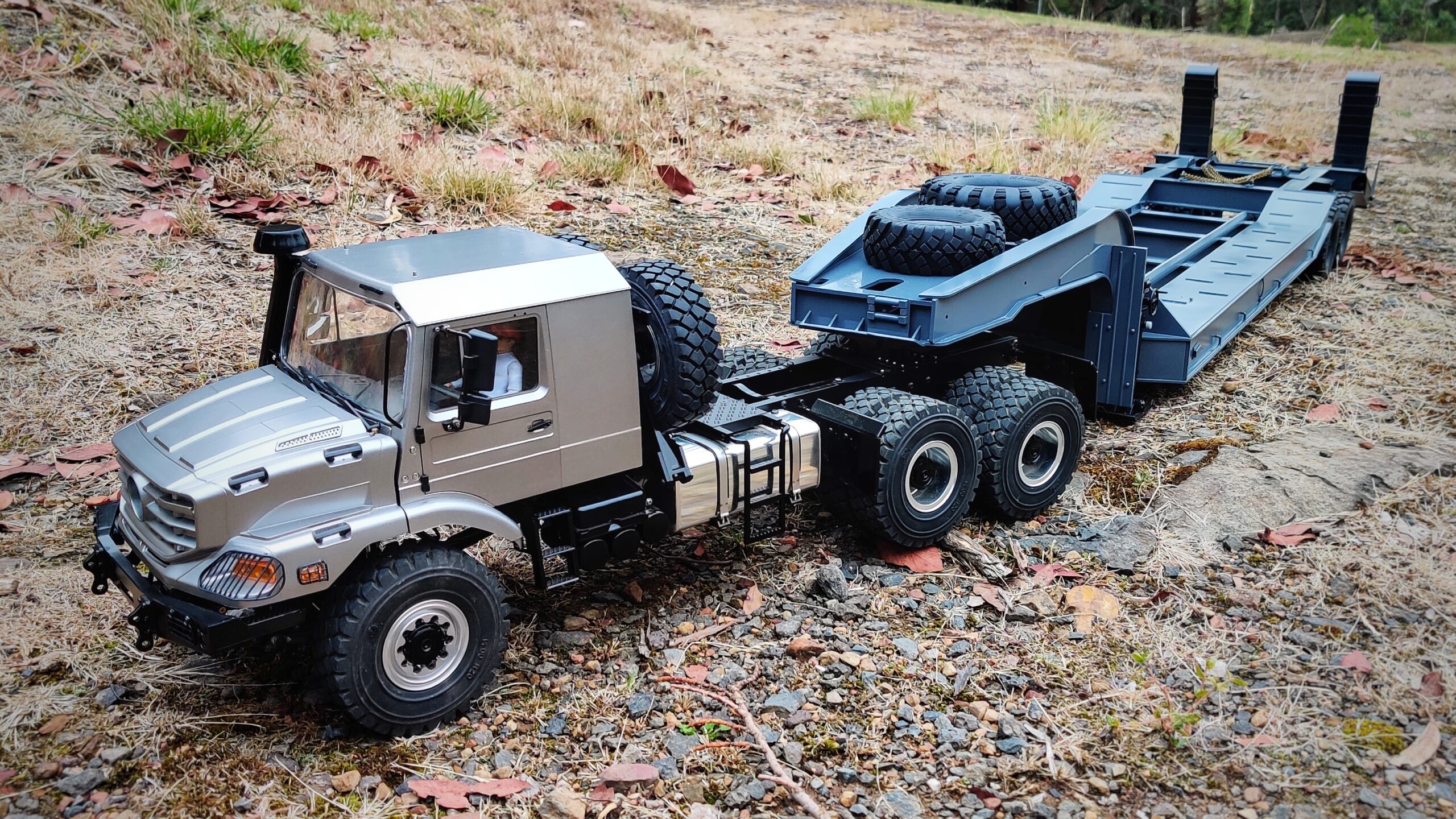
Why Are LiPo Batteries Bad?
Well, I’ve dumbed it down a little, here. LiPo isn’t ‘good’ or ‘bad’, but consequences of mistreatment certainly can be bad. There’s inconvenience and then there’s danger.
Inconvenience first: any kind of lithium cell is best stored at its nominal voltage. For LiPo batteries, that means storing the battery at 3.8v per cell. For a 2-cell battery, that means storing at 7.4v (2x 3.8v). We’ll cover more below, but don’t overlook the question of storage. Many articles and videos do overlook it, and even the quick USB chargers that come with so many models don’t even have a storage charge feature, but it does matter. LiPo batteries don’t like being stored at full or empty charge. They want to be stored at about half charge.
Danger should maybe get its own section, but in short, if a LiPo is damaged or severely overcharged, fire is a possibility. More in the next section…
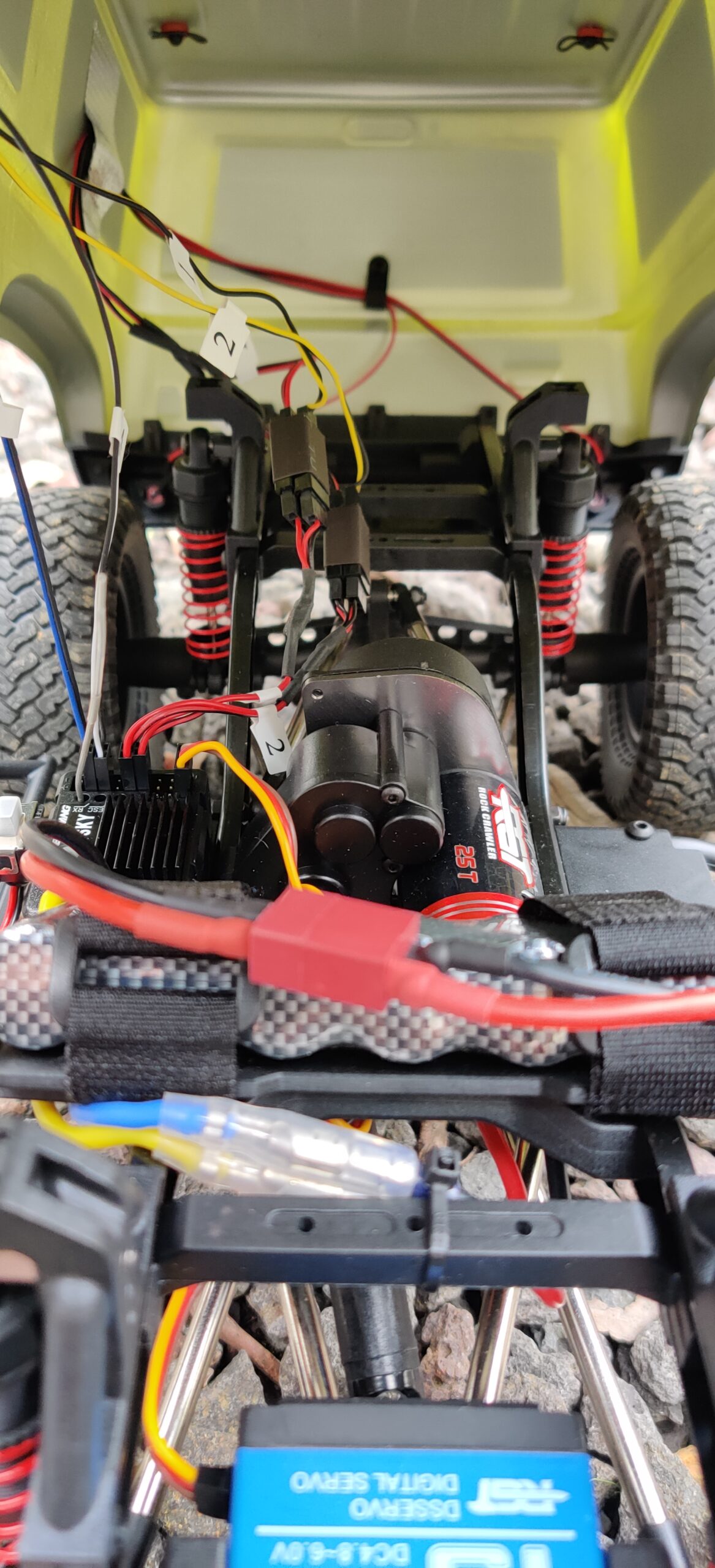
Safety and LiPo Batteries
LiPo batteries require special care and handling to ensure their safe and proper use. They can be damaged if overcharged, over-discharged, or exposed to high temperatures. It’s important to follow the manufacturer’s guidelines and use a proper charger to ensure the safe and long-lasting use of these batteries.
Generally speaking, this means you want to store your LiPo batteries using the Storage function of your charger (and get a Storage capable charger as a top priority if you don’t have one already!)
If you need a charger, these are two of my favorites:
- SkyRC iMAX B6 (6A max current, full featured); and,
- SkyRC T200 1000W Dual (12A x2).
Always charge under supervision and use LiPO Safe Bags for charging and storage (pictured below). These fiberglass reinforced bags help contain fire, in the very unlikely event one may occur.
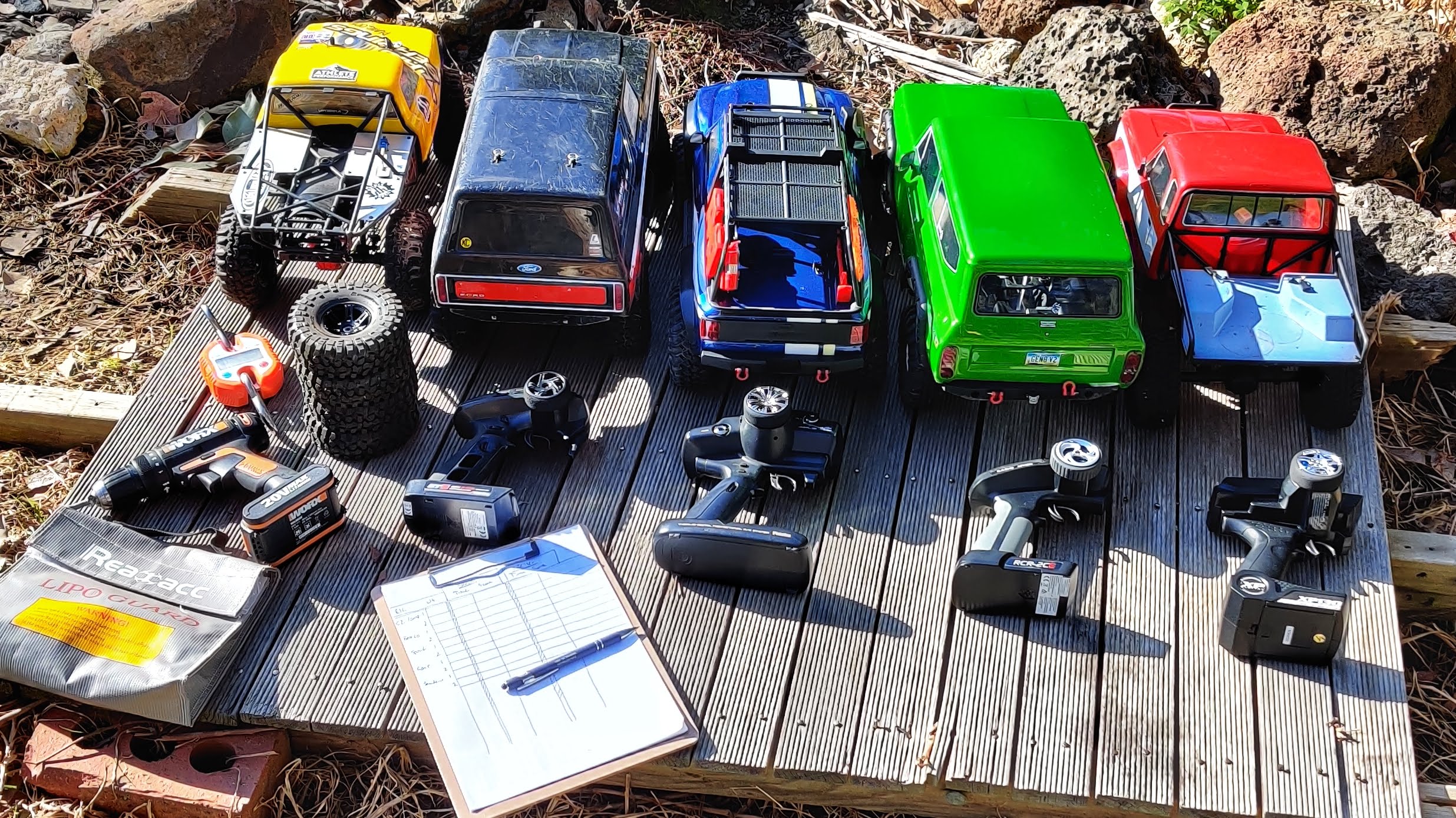
Charging Safely
The safest way to charge LiPo batteries is to:
- Use a special charger made for LiPo batteries;
- Connect the balance lead of the battery to the charger;
- Use the balance program on the charger;
- Charge at 1C (at 5A if its a 5000mAh, for example);
- Use a fire-proof container or surface to charge the battery;
- Never leave the battery charging unattended. No, really. Be nearby!
By using the balance lead and the balance program on the charger, you can ensure that all the cells in the battery have the same level of charge throughout the charge cycle, preventing dangerous situations due to individual cell overcharging or imbalance. Additionally, only use a charger specifically designed for LiPo batteries like the ones linked above.
Here’s one of the first videos I ever made about LiPos and charging. It’s an older one now, but might be useful for context. The process hasn’t changed!
What Makes a LiPo Battery?
LiPo batteries are typically available in several different configurations, including single cell (1S), two-cell (2S), three-cell (3S), and so on. The voltage of a LiPo battery is determined by the number of cells it has. For example, a single cell LiPo battery has a voltage of 3.7V, while a two-cell (2S) LiPo battery has a voltage of 7.4V, and so on.
As well as cell count (the ‘S’ number), there’s also the discharge potential (or, the ‘C’ number). Discharge is relevant insofar as you need to know the battery can give enough power to your model in any given moment. Consider how little power a phone with a LiPo battery might draw, remembering that this one battery will power the handset all day. The phone will never pull more than maybe a tenth of the total battery capacity in any instant, even under heavy load.
Some RC models have beefy motors and significant overall mass. This can result in the vehicle needing to pull a significant amount of power in an instant, such as under heavy acceleration. Maybe you’re trying to see how fast a car can go? That’s a drag-strip worth of heavy discharge, potentially. The ‘C’ rating helps you determine whether your battery is up to such a task – higher C number means more discharge potential, which is good.

C Rating in More Detail
A battery with a C rating of 1C means that it can discharge its entire capacity in one hour, while a battery with a C rating of 2C can discharge its entire capacity in half an hour. Take this further – a C rating of 60 is a theoretical claim that a battery can deliver its entire capacity in a single minute!
LiPo battery cells max out at about 75C. There are ways to get a higher C rating than 75 or so. Some batteries, like the Ovonic we reviewed here, use two parallel cells in the battery for each cell, which is how they can claim 100C, for example. A higher C rating means that the battery can discharge its energy more quickly, which is important for high-performance applications such as RC racing.

What Next?
Here’s a recent article I wrote about one general-purpose LiPo battery which also has more detail about battery history and usage. Check it out!
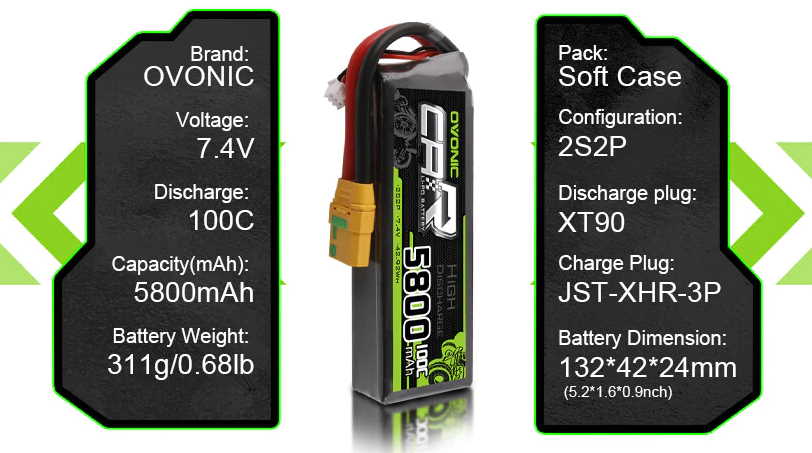

Craig Veness
RC-TNT
Craig has been into radio control since the 90s and into RC crawling since about 2010, when a Losi MRC started the obsession! Now it's all rocks this and crawl that and upgrade all the things! ...You know how it is, right? Welcome home 🙂

